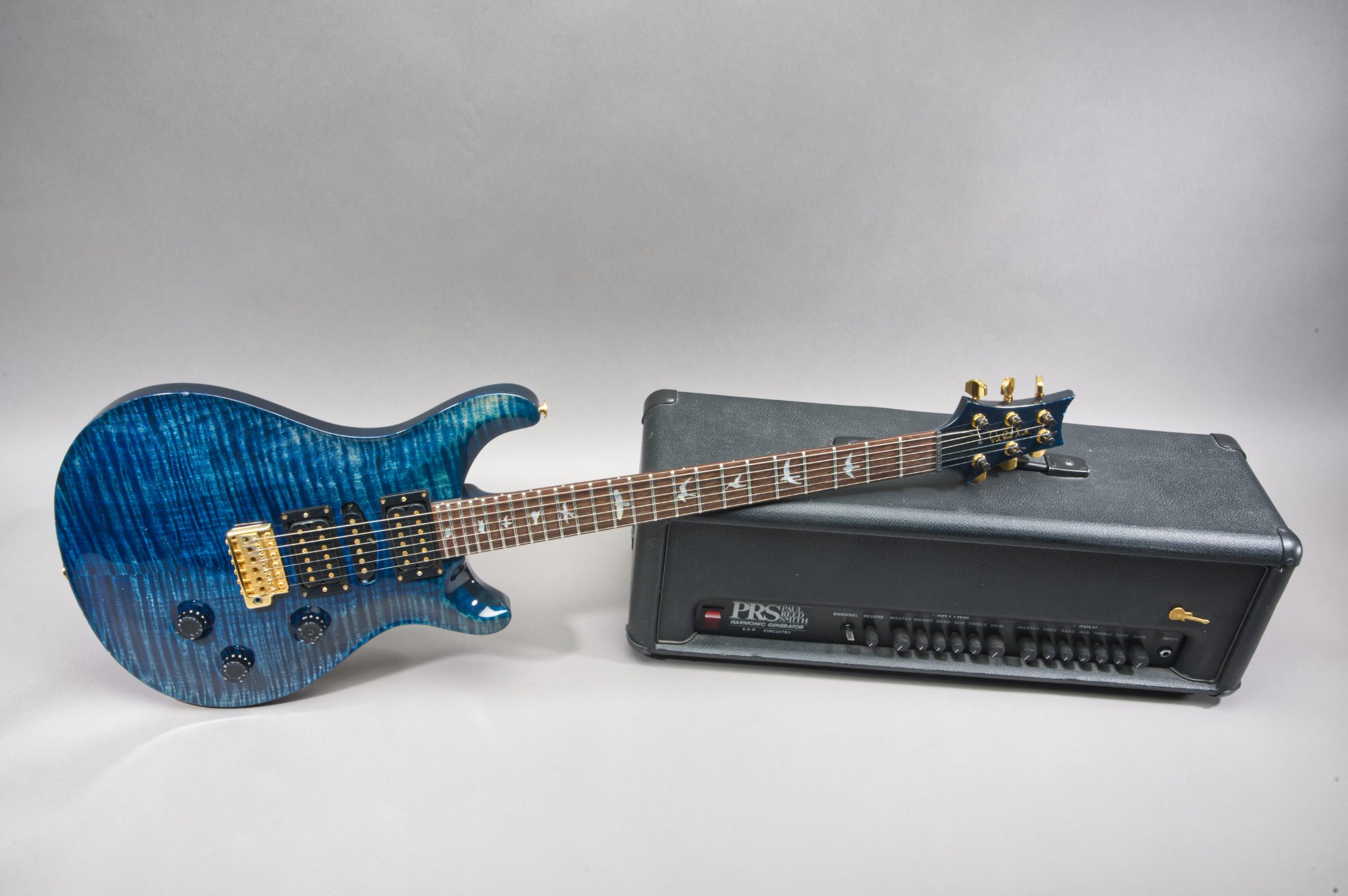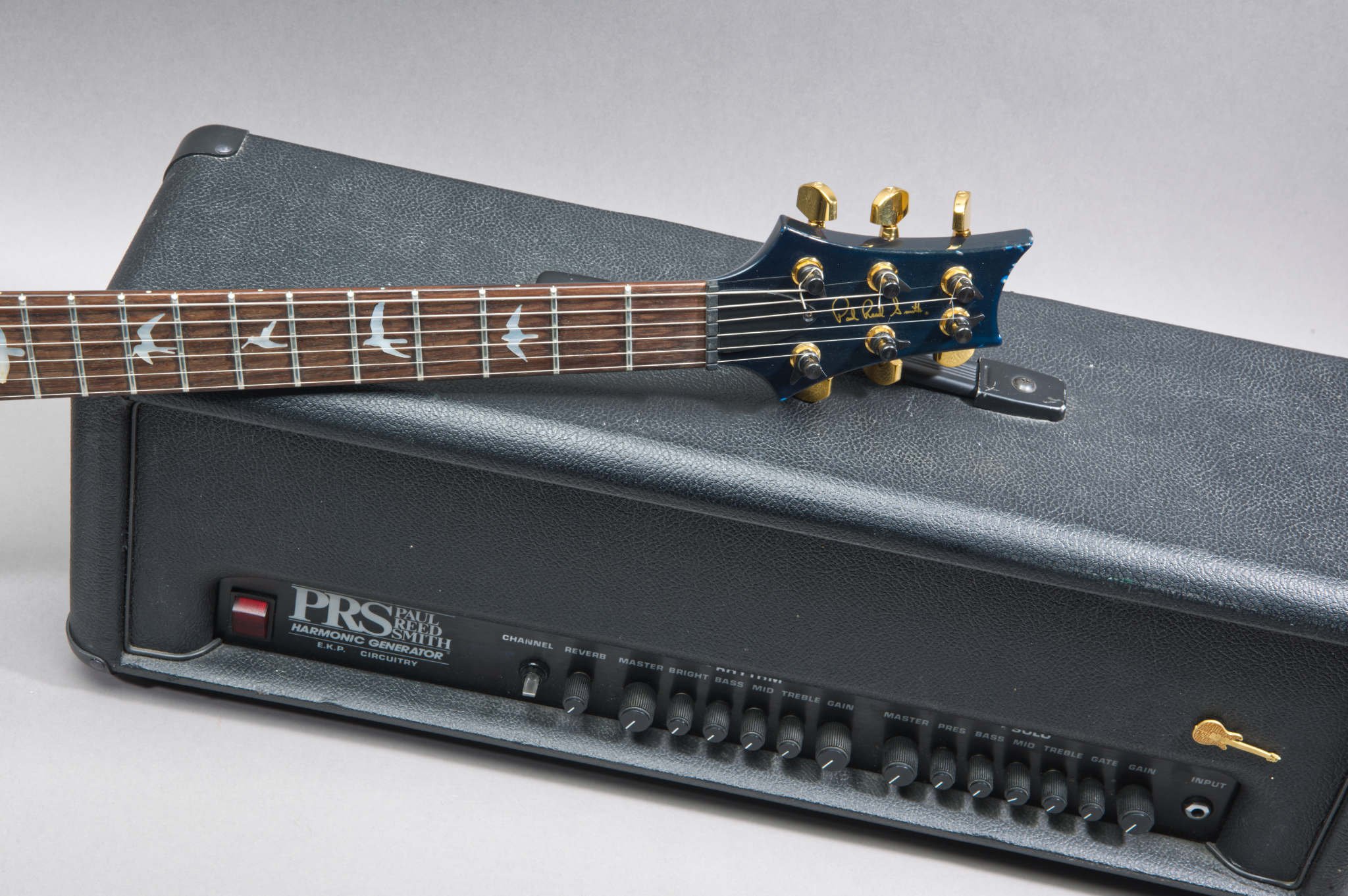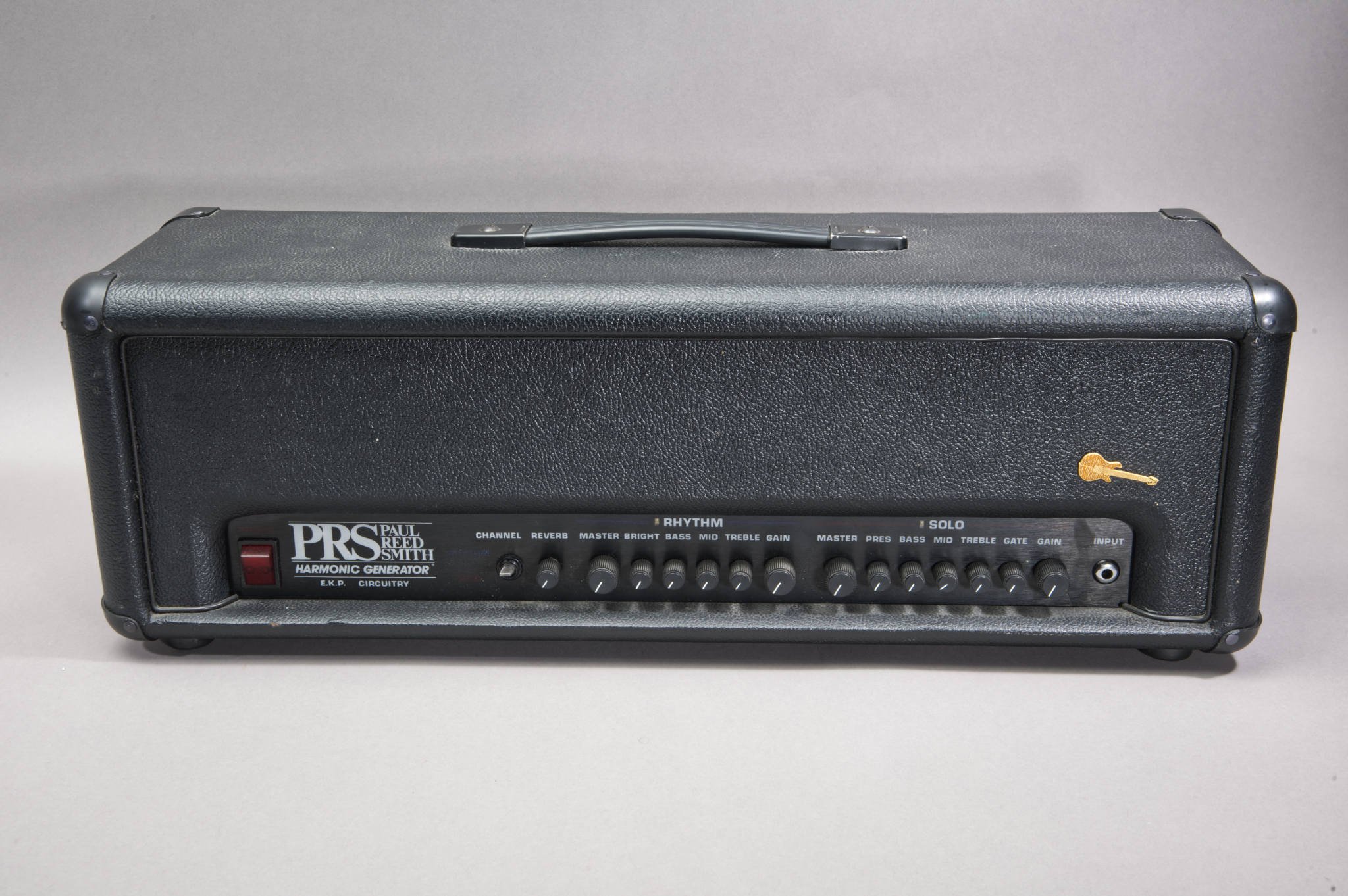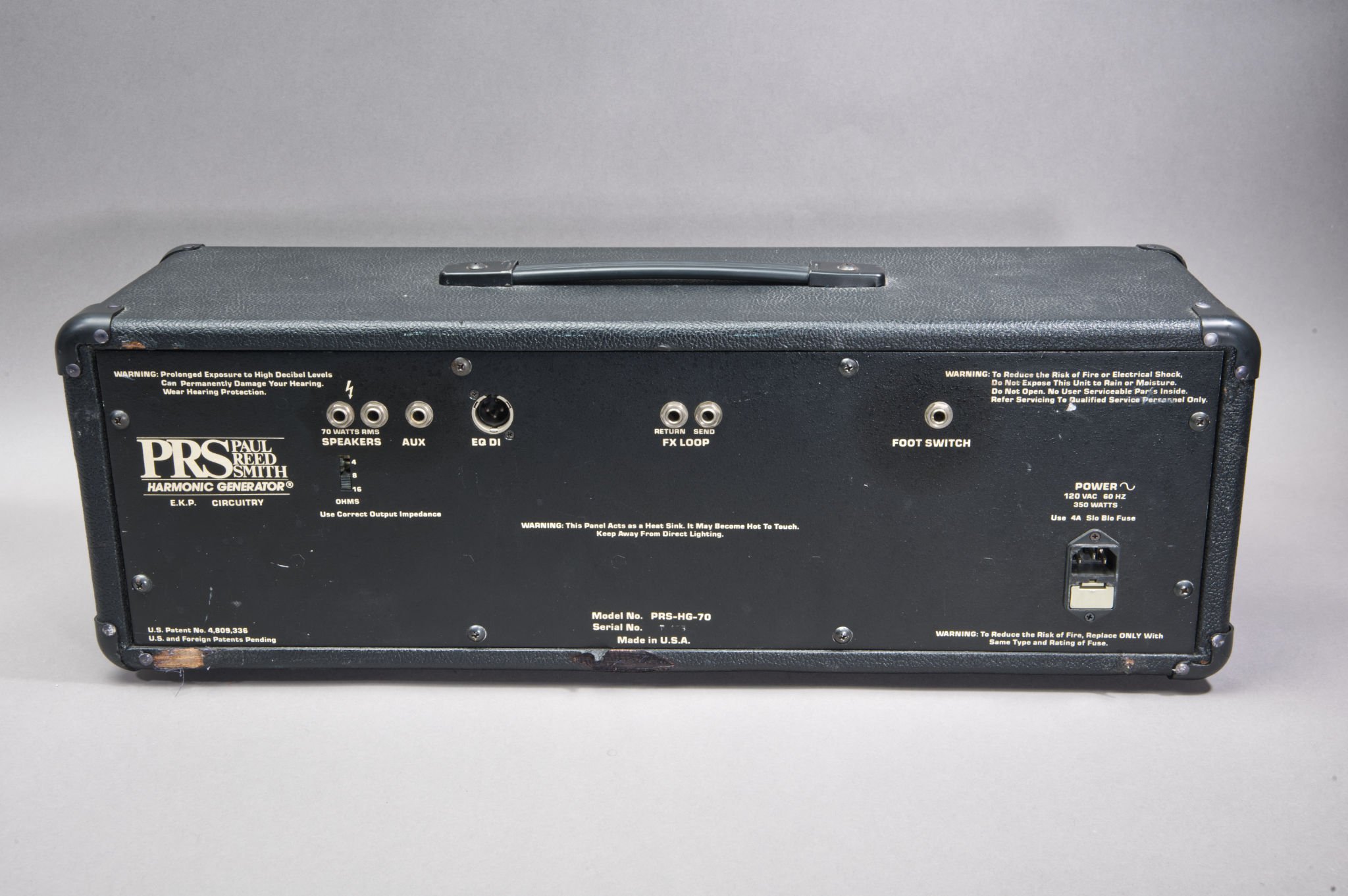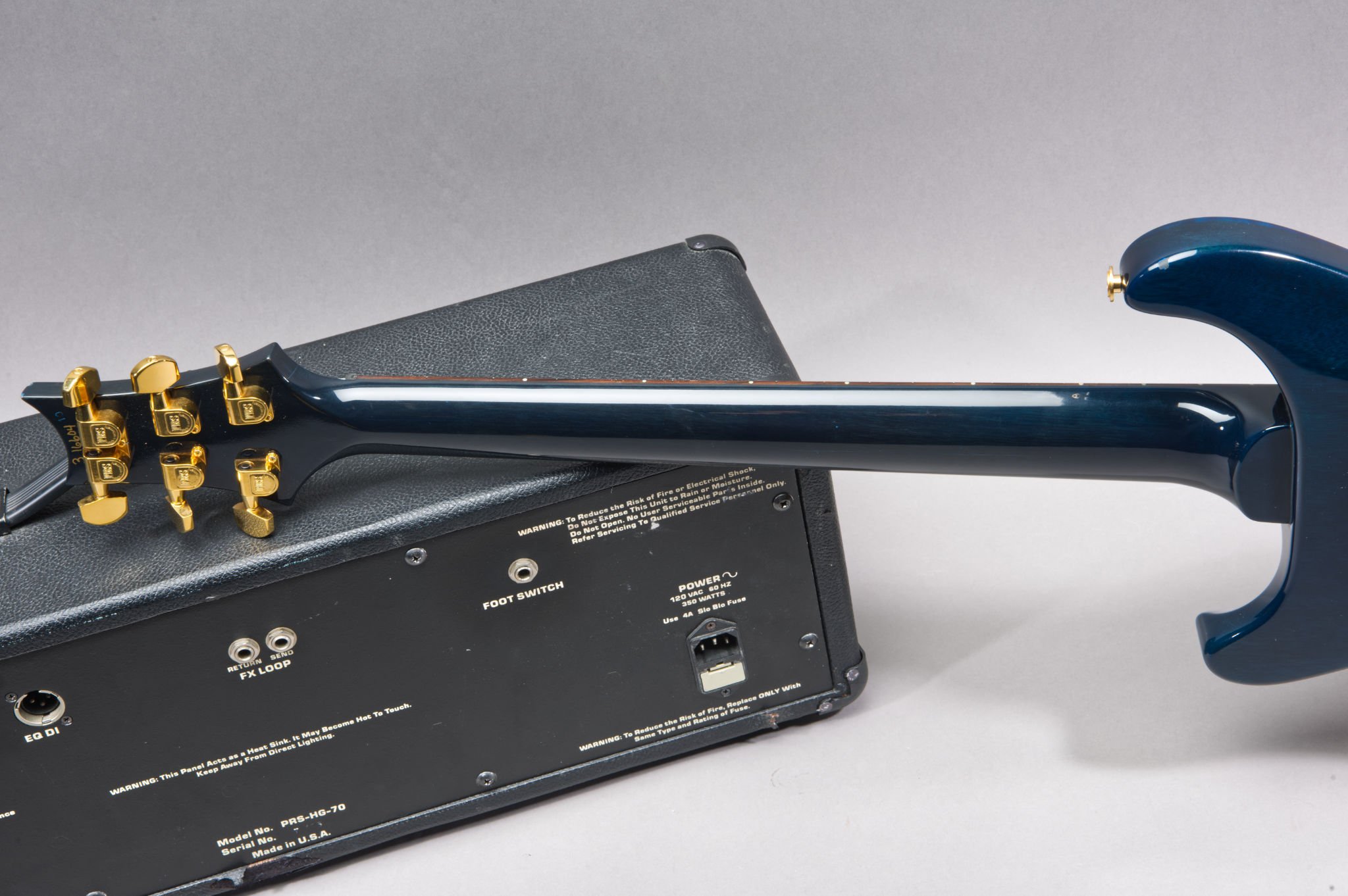The "Ed King's PRS" Ultimate Package
The "Ed King's PRS" Ultimate Package
The "Ed King's (Lynyrd Skynyrd) Ultimate Package"
starring
a PRS 1993 Custom 24 10 Top Ed King in Royal Blue Finish, #3-16604 from 06.08.1993
sided with
a PRS HG-70 amp #T-173, EX Ed King, which was the only PRS amplifier in his collection.
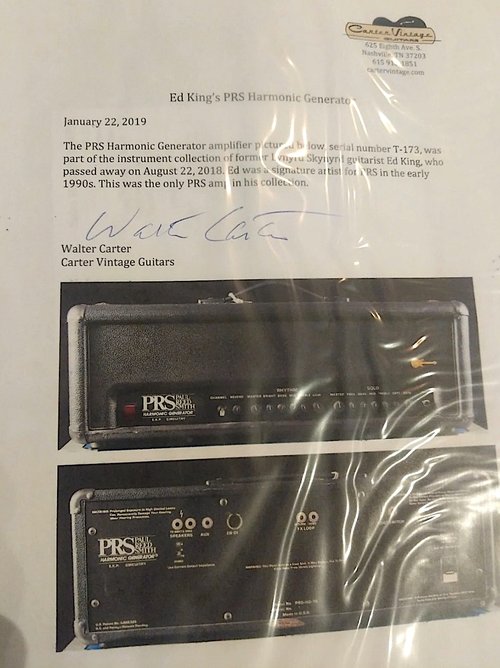
Regarding the Paul Reed Smith amp HG-70 head.
Only about 350 heads and combos were built in 1900-1991.
Solid state, two channel
In the late 1980's, vacuum tubes used in guitar amps became scarce as more and more tube manufacturers ceased production. Paul Reed Smith set out to design a top-flight guitar amp using transistor technology, and the PRS HG-70 Harmonic Generator was the result, without doubt one of the sweetest, warmest solid- state guitar amps ever made.
The Harmonic Generator's circuitry was designed primarily by Eric Pritchard, currently of Pritchard Amps, and was innovative in two key ways. First was the use of a harmonic generator (surprise!) that was used to add additional harmonics to the amp's basic tone to create a lively, more tube-like sound and response to playing touch.
Secondly, the PRS HG-70 was one of the very few transformer output-coupled transistor amps ever designed. In essence, it actually uses an output transformer, much like a tube amp.
The PRS HG-70 sports two channels. "Rhythm" produces fat, rich sounding clean tones, while "Solo" yields overdriven crunch and lead tones. While the Solo channel is ideal for punchy blues leads and fat classic rock riffing, it stops short of delivering over-the- top, max-gain metal or thrash tones. The HG-70 is definitely geared more toward lush, vintage-flavoured clean and overdrive sounds.
So what went wrong? Why haven't you heard of the PRS HG-70 Harmonic Generator amp until now? When the amp made its debut at the 1991 Winter NAMM Show, it sported an unusually high list price for a solid-state amp, due mostly to the extensive R&D that went into the design, as well as the expense of its high quality components. In addition, the U.S. commenced the bombing of Iraq that signaled the start of Desert Storm just as the 1991 Winter NAMM show got underway. This led to a conservative, slow sales year for the music industry that created a climate unfriendly to a new and untested high-end product like the HG-70.
The real killing blow, however, was the fall of the Iron Curtain in Eastern Europe, which led to an explosion of vacuum tube manufacturing in Russia and the former Communist Bloc. The tube-free future that PRS envisioned never materialized, and as innovative young companies like Rivera, Bogner, Soldano, and many others created a Renaissance of innovative tube amp design, the HG-70 was left without an audience. Only about 350 heads and combos were shipped before production ceased.
Paul Reed Smith, the founder of PRS Guitars was born in Bowie, Maryland, USA, February 18th, 1956.
